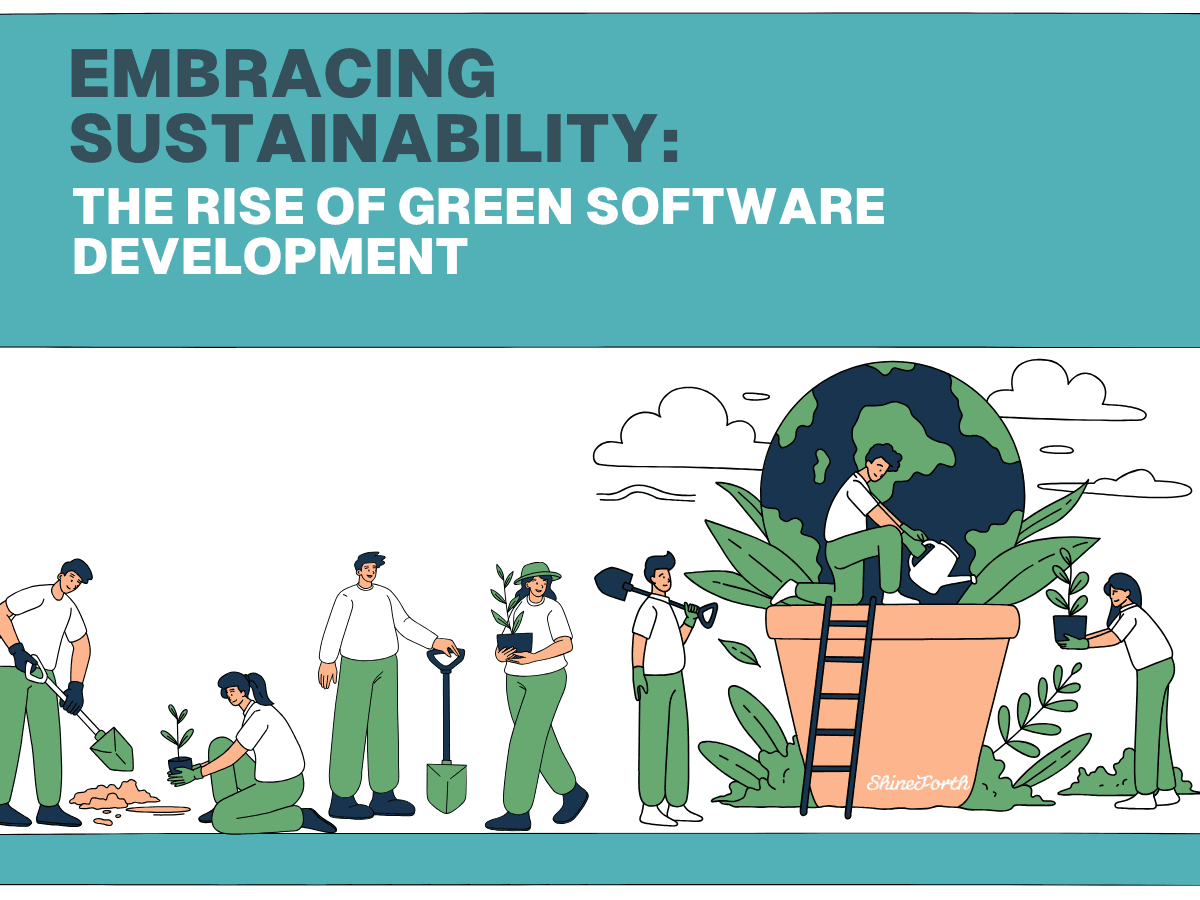Embracing Sustainability: The Rise of Green Software Development

As businesses across the globe work to reduce their carbon footprints, the tech industry is following suit. Software development, traditionally seen as a neutral contributor to environmental impact, is now being reevaluated through the lens of sustainability. In 2024, green software development is more than just a buzzword—it’s becoming a vital part of creating responsible, future-proof solutions.
At ShineForth, we recognize that sustainability in tech is not just about reducing physical waste or energy consumption; it’s about developing smarter, more efficient software that minimizes its environmental impact. In this blog, we explore what green software development entails, why it matters, and how your business can integrate eco-friendly practices into its software strategy.
What is Green Software Development?
Green software development refers to the practice of designing, building, and operating software in a way that minimizes its environmental impact. This involves:
- Optimizing energy efficiency
- Developing software that uses less processing power and reduces the overall energy consumption of devices and data centers.
- Minimizing resource usage
- Building applications that run efficiently on fewer resources, whether on the cloud or on-premise servers.
- Sustainable coding practices
- Writing code that is cleaner, more efficient, and optimized to reduce the computational load.
The goal is to create software that contributes to a lower carbon footprint across its lifecycle—from development and deployment to ongoing use and updates.
Why Green Software Development Matters
The environmental footprint of the tech industry is significant. Data centers, the backbone of the internet, are responsible for approximately 1% of the world's electricity consumption—a figure that's only expected to grow (IEA, 2021). As more businesses shift to cloud services and data-heavy applications, it becomes crucial to consider the sustainability of software systems.
Here’s why green software development is gaining traction:
- Reducing Energy Consumption
Many applications are built without regard for the energy required to power servers or process data. By writing more efficient code and optimizing software to run on fewer resources, businesses can significantly reduce the energy consumed by their applications. This can lead to lower operational costs and a smaller carbon footprint. - Meeting Sustainability Goals
As companies are increasingly held accountable for their environmental impact, integrating sustainability into software development can help meet corporate responsibility and sustainability goals. Many organizations now include environmental criteria in their vendor and partner selection, meaning that green software practices are not only good for the planet but also good for business. - Aligning with Consumer Preferences
Consumers are becoming more eco-conscious, and they expect the brands they support to prioritize sustainability. Businesses that adopt green practices in software development are better positioned to attract eco-minded customers and demonstrate leadership in environmental stewardship.
How to Integrate Green Software Development in Your Business
How to Integrate Green Software Development in Your Business
If you’re ready to embrace green software development, here are a few steps to get started:
- Audit Your Current Software
Start by evaluating your existing software systems for inefficiencies. Identify areas where you can reduce resource usage and improve performance through optimization. - Choose the Right Tools
When developing new software, select tools, frameworks, and platforms that prioritize sustainability. Look for cloud providers offering green hosting solutions and technologies known for their efficiency. - Collaborate with Sustainable Partners
Work with software development partners like ShineForth who are committed to sustainable practices. By choosing the right development team, you can ensure that your software solutions are both high-quality and eco-friendly.
Conclusion
Green software development is not just about following a trend—it’s about embracing a future where technology and sustainability go hand in hand. At ShineForth, we’re proud to be part of this movement, developing innovative software solutions that reduce environmental impact while meeting the highest standards of performance.
As businesses continue to adopt greener practices, integrating sustainability into software development is a critical step toward a more eco-conscious future. Whether you’re optimizing existing software or developing new solutions, green practices will not only lower your environmental footprint but also position your business as a leader in responsible innovation.
References
International Energy Agency (IEA). (2021). Data Centres and Data Transmission Networks. Retrieved from https://www.iea.org/reports/data-centres-and-data-transmission-networks